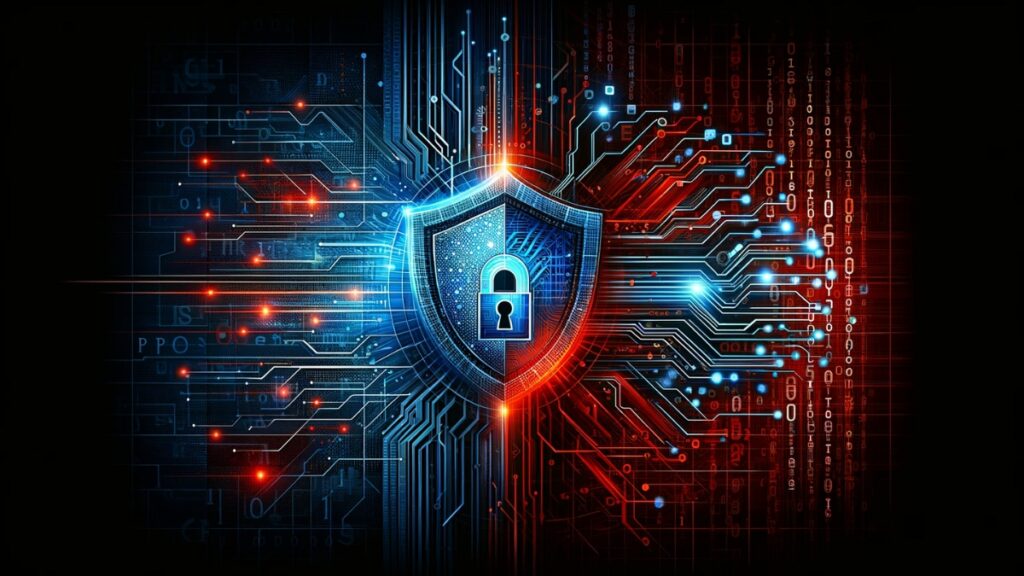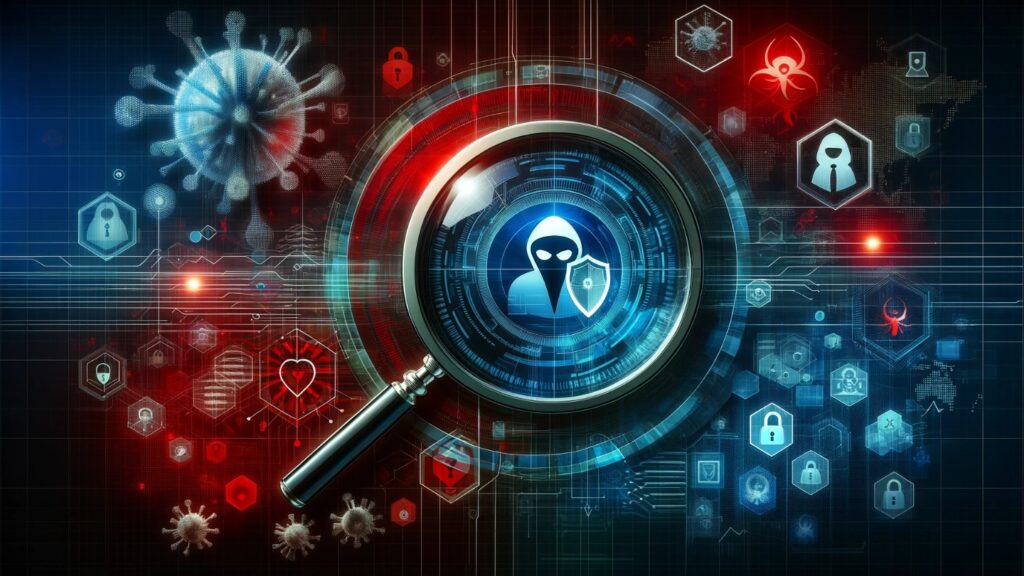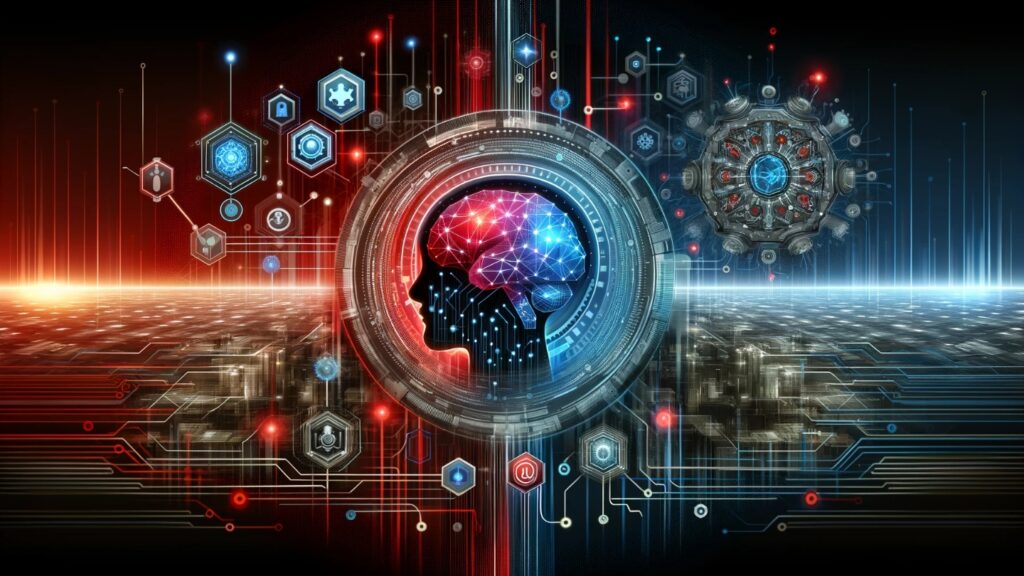In the ever-evolving digital landscape, cybersecurity has emerged as a critical component of global security infrastructure. The surge in digital communication, cloud computing, and online transactions has amplified the need for robust cybersecurity measures. This article delves into the fundamentals of cybersecurity, aiming to enlighten readers on how to navigate and protect their digital presence effectively.
The Digital Landscape and the Importance of Cybersecurity
The digital world today is vast and interconnected, making it an attractive target for cybercriminals. From personal data on mobile devices to sensitive information in corporate networks, the digital realm is rich with data that, if compromised, can lead to severe consequences. Cybersecurity is the practice of protecting these systems, networks, and programs from digital attacks. These cyber-attacks are usually aimed at accessing, changing, or destroying sensitive information; extorting money from users; or interrupting normal business processes.
Implementing effective cybersecurity measures is particularly challenging today because there are more devices than people, and attackers are becoming more innovative.
A Brief History of Cybersecurity Evolution
Cybersecurity has evolved significantly over the years. Let’s take a brief look at its evolution:
- 1970s: The Advent of Antivirus The inception of cybersecurity can be traced back to the 1970s when the Creeper virus, the first known computer virus, appeared. It led to the creation of the first antivirus program, Reaper.
- 1980s: The Rise of Internet Security As the internet grew in the 1980s, so did the complexity of cyber threats. This era saw the emergence of notable malware like the Brain virus, and the need for more sophisticated cybersecurity solutions became evident.
- 1990s: The Era of Cybersecurity Firms With the internet becoming more accessible, the 1990s witnessed the birth of numerous cybersecurity firms. These companies started developing various cybersecurity tools and protocols to protect against an increasing array of cyber threats.
- 2000s-Present: Advanced Cybersecurity The 21st century has seen rapid technological advancements, leading to more complex and frequent cyber-attacks. This era is marked by the emergence of advanced cybersecurity measures, including AI-driven threat detection systems, blockchain for security, and comprehensive cybersecurity frameworks.
Cybersecurity has transformed from a niche concern to a global priority. The evolution from basic antivirus software to complex, multi-layered cybersecurity systems reflects the escalating sophistication of cyber threats. Today, cybersecurity is an integral part of the digital world, continuously adapting to counteract the ever-changing landscape of cyber threats.
Understanding Cyber Threats
In the realm of cybersecurity, understanding the nature and variety of cyber threats is crucial. These threats constantly evolve, becoming more sophisticated and challenging to detect. This section provides an overview of the primary types of cyber threats and highlights some significant cyber-attacks in recent history.
Types of Cyber Threats
Cyber threats come in various forms, each with its unique method of exploiting the vulnerabilities of digital systems. Here are some of the most common types:
- Malware
- Definition: Malware, or malicious software, refers to any program or file that is harmful to a computer user. It includes viruses, worms, Trojan horses, and spyware.
- Impact: Malware can steal, encrypt, or delete sensitive data, alter or hijack core computing functions, and spy on the user’s computer activity without their knowledge.
- Phishing
- Definition: Phishing is a cybercrime in which targets are contacted by email, telephone, or text message by someone posing as a legitimate institution to lure individuals into providing sensitive data.
- Impact: Phishing can lead to identity theft, financial loss, and unauthorized access to personal or corporate accounts.
- Ransomware
- Definition: Ransomware is a type of malware that threatens to publish the victim’s data or perpetually block access to it unless a ransom is paid.
- Impact: It can cause significant data loss and financial damage, especially if backup systems are not in place.
- DDoS Attacks
- Definition: Distributed Denial of Service (DDoS) attacks aim to disrupt the normal traffic of a targeted server, service, or network by overwhelming the target or its surrounding infrastructure with a flood of internet traffic.
- Impact: DDoS attacks can shut down websites, services, or networks, leading to significant downtime and loss of revenue.
- Zero-Day Exploits
- Definition: These are attacks that occur on the same day a weakness is discovered in software. At this point, the software developers have had zero days to create patches or advise a mitigation.
- Impact: They can lead to massive data breaches or system compromises before a fix is available.
Examining Notable Instances of Major Cybersecurity Incidents
To grasp the seriousness and consequences of cyber threats, it’s informative to delve into some prominent real-life cases:
| Year | Attack Type | Target | Impact |
|---|---|---|---|
| 2017 | Ransomware | WannaCry | Affected over 200,000 computers across 150 countries. |
| 2018 | Data Breach | Compromised personal data of 29 million users. | |
| 2020 | Phishing | Twitter VIP accounts | High-profile accounts hacked for a Bitcoin scam. |
| 2021 | Supply Chain | SolarWinds | Led to the compromise of thousands of organizations. |
The Role of Encryption and Firewalls in Cybersecurity

In the battle against cyber threats, two critical defenses stand out: encryption and firewalls. Both play a pivotal role in safeguarding data and protecting networks from unauthorized access. This section explores how encryption and firewalls function and why they are indispensable in the cybersecurity toolkit.
Understanding Encryption
Encryption is the process of converting data or information into a code, especially to prevent unauthorized access. It’s like sending a secret message that only the intended recipient can decode.
Types of Encryption:
- Symmetric Encryption
- How It Works: Involves a single key for both encrypting and decrypting information. The sender and the receiver must both have the same key.
- Use Cases: Symmetric encryption is faster and more efficient, making it suitable for encrypting large volumes of data, such as for database security.
- Asymmetric Encryption
- How It Works: Utilizes a pair of keys – a public key for encryption and a private key for decryption. The public key can be shared with anyone, while the private key is kept secret.
- Use Cases: Commonly used for secure data transmission, such as in SSL/TLS for secure web browsing and in email encryption.
Importance of Encryption:
- Data Protection: Encryption ensures that even if data is intercepted or accessed without authorization, it remains unreadable and secure.
- Confidentiality and Privacy: It protects personal and sensitive information, maintaining the privacy of both individuals and organizations.
- Integrity and Authentication: Encryption, coupled with other security measures, helps verify the integrity and origin of data, preventing tampering and impersonation.
Understanding Firewalls
A firewall is a network security device that monitors and filters incoming and outgoing network traffic based on an organization’s previously established security policies. At its most basic, a firewall is a barrier between a private internal network and the public internet.
Types of Firewalls:
- Packet-Filtering Firewalls
- Function: Examines packets of data and blocks or allows them based on predefined rules.
- Use Case: Suitable for small networks or as a component of a more comprehensive security system.
- Stateful Inspection Firewalls
- Function: Monitors the state of active connections and makes decisions based on the state and context of the traffic.
- Use Case: Offers more security than packet-filtering firewalls and is widely used in various settings.
- Next-Generation Firewalls (NGFW)
- Function: Includes features of traditional firewalls combined with advanced functionalities like encrypted traffic inspection, intrusion prevention systems, and more.
- Use Case: Ideal for protecting modern enterprise networks with complex security needs.
Importance of Firewalls:
- Network Security: Firewalls serve as the first line of defense in network security by controlling traffic based on security rules.
- Traffic Management: They help manage network traffic, ensuring smooth operation and preventing network overload.
- Preventing Cyber Attacks: Firewalls can block malicious traffic and unauthorized access, reducing the risk of cyber attacks.
Risk Management in Cybersecurity
Effective risk management is a cornerstone of robust cybersecurity. It involves identifying, assessing, and controlling threats to an organization’s capital and earnings. This section delves into the nuances of cybersecurity risk management, providing insights into how organizations can anticipate, mitigate, and respond to cyber risks.
Identifying and Assessing Cybersecurity Risks

Risk identification and assessment are the first steps in the risk management process. This involves understanding the potential cyber threats and their impact on the organization.
Steps in Risk Identification and Assessment:
- Asset Identification: Determine what data, systems, or resources need protection. This could include customer data, intellectual property, or critical infrastructure.
- Threat Analysis: Identify potential threats, such as malware, phishing, insider threats, and natural disasters.
- Vulnerability Assessment: Assess the weaknesses in the system that could be exploited by threats. This includes outdated software, weak passwords, and lack of employee awareness.
- Risk Estimation: Estimate the likelihood and potential impact of these threats materializing. This can be quantified through a risk matrix.
| Threat Type | Likelihood | Impact | Overall Risk |
|---|---|---|---|
| Malware | High | High | Severe |
| Phishing | Medium | High | Moderate |
| Insider Threats | Low | High | Moderate |
| Natural Disasters | Low | Medium | Low |
Strategies for Risk Mitigation
Once risks are identified and assessed, the next step is to develop strategies to mitigate these risks. Mitigation involves reducing the likelihood of a threat occurring or minimizing its impact if it does occur.
Key Risk Mitigation Strategies:
- Implementing Strong Security Policies: Establishing and enforcing comprehensive security policies can prevent unauthorized access and reduce vulnerabilities.
- Regular Software Updates: Keeping software and systems up to date with the latest security patches helps protect against known vulnerabilities.
- Employee Training and Awareness Programs: Educating staff about cyber risks and best practices is crucial for preventing security breaches.
- Data Backup and Recovery Plans: Regularly backing up data ensures that it can be recovered in the event of a cyber-attack or data loss.
- Incident Response Planning: Having a well-defined incident response plan enables an organization to react quickly and effectively to a cyber incident.
Cybersecurity Best Practices for Individuals and Organizations
Adopting best practices in cybersecurity is crucial for both individuals and organizations to protect against a wide range of cyber threats. This section outlines key practices that can significantly enhance digital security.
Secure Password Policies
Passwords are often the first line of defense in cybersecurity. Implementing strong password policies is essential for safeguarding accounts and sensitive information.
Tips for Creating Strong Passwords:
- Use Complex Passwords: Combine letters (both uppercase and lowercase), numbers, and symbols.
- Avoid Common Words and Phrases: Do not use easily guessable passwords like “password” or “123456”.
- Length Matters: Use passwords that are at least 12 characters long.
- Change Passwords Regularly: Update passwords every 3-6 months to reduce the risk of breaches.
- Use Different Passwords for Different Accounts: This prevents a single compromised password from jeopardizing multiple accounts.
Regular Software Updates and Patches
Keeping software up-to-date is critical in protecting against vulnerabilities that cybercriminals could exploit.
Importance of Software Updates:
- Patch Vulnerabilities: Updates often include patches for security vulnerabilities.
- Enhance Features: New updates can improve functionality and efficiency.
- Compliance: Keeping software updated ensures compliance with various data protection regulations.
Educating Employees/Users About Cybersecurity
Human error is a significant factor in many cybersecurity breaches. Therefore, education and awareness are key.
Components of a Cybersecurity Awareness Program:
- Regular Training Sessions: Conduct workshops and seminars on cybersecurity.
- Simulated Cyber Attacks: Use mock phishing emails to train employees in identifying potential threats.
- Updates on Latest Threats: Keep the team informed about recent cyber threats and scams.
- Best Practice Guidelines: Distribute guidelines on secure internet practices, email handling, and password management.
Emerging Technologies and Cybersecurity

The dynamic field of cybersecurity is continually influenced by emerging technologies. Advancements such as Artificial Intelligence (AI), machine learning, and blockchain are reshaping the landscape of digital security, offering both new solutions and posing unique challenges. This section explores the impact of these technologies on cybersecurity.
Impact of AI and Machine Learning
AI and machine learning are revolutionizing cybersecurity by automating complex processes for detecting and responding to cyber threats.
Applications of AI in Cybersecurity:
- Threat Detection and Response: AI algorithms can analyze vast amounts of data to identify patterns indicative of cyber attacks, often recognizing threats faster and more accurately than human analysts.
- Predictive Analytics: AI can predict potential vulnerabilities and attack vectors by analyzing historical data and current trends.
- Automated Incident Response: AI systems can automatically respond to certain types of cyber threats, reducing the response time and mitigating damage.
Blockchain and Cybersecurity
Blockchain technology, known for powering cryptocurrencies like Bitcoin, offers unique advantages for enhancing cybersecurity.
Benefits of Blockchain in Cybersecurity:
- Decentralization: By eliminating central points of failure, blockchain technology reduces the risk of data breaches.
- Data Integrity: Blockchain’s inherent design ensures data integrity, making it almost impossible to alter recorded data without detection.
- Secure Transactions: Blockchain can secure transactional data, making it an ideal solution for sectors like finance and e-commerce.
Legal and Ethical Considerations in Cybersecurity
As the digital landscape evolves, the legal and ethical implications of cybersecurity become increasingly significant. This section examines the regulatory requirements and ethical considerations that shape cybersecurity practices, ensuring they are not only effective but also responsible and compliant.
Understanding Compliance and Regulatory Requirements
With the growing number of cyber threats, governments and international organizations have established various laws and regulations to protect data and privacy.
Key Regulatory Frameworks in Cybersecurity:
- General Data Protection Regulation (GDPR):
- Region: European Union
- Focus: Protects personal data and privacy of EU citizens.
- Requirement: Organizations must ensure data protection by design and default.
- California Consumer Privacy Act (CCPA):
- Region: California, USA
- Focus: Gives Californians more control over the personal information that businesses collect.
- Requirement: Businesses must disclose data collection and sharing practices to consumers.
- Health Insurance Portability and Accountability Act (HIPAA):
- Region: USA
- Focus: Protects sensitive patient health information.
- Requirement: Healthcare providers must implement secure electronic access to health data and comply with privacy regulations.
Importance of Compliance:
- Legal Obligation: Non-compliance can result in hefty fines and legal penalties.
- Trust and Reputation: Compliance helps build trust with clients and stakeholders.
- Data Protection: These regulations ensure that organizations implement adequate security measures to protect sensitive data.
Ethical Hacking and Its Role in Strengthening Security
Ethical hacking involves legally breaking into computers and devices to test an organization’s defenses. It’s also known as penetration testing or white-hat hacking.
Benefits of Ethical Hacking:
- Identifying Vulnerabilities: Ethical hackers help organizations understand where their weaknesses lie.
- Enhancing Security Measures: By simulating real-world attacks, organizations can better prepare their defenses.
- Compliance Testing: Ethical hacking can ensure that security measures meet regulatory requirements.
Conclusion: Staying Ahead in Cybersecurity
In conclusion, the landscape of cybersecurity is constantly evolving, with new challenges and solutions emerging regularly. Understanding cybersecurity fundamentals is crucial for individuals and organizations alike to navigate this dynamic environment effectively. From recognizing various cyber threats to implementing advanced technologies like AI and blockchain, the journey through cybersecurity is ongoing and multifaceted. It requires not only technological savvy but also an awareness of legal and ethical implications. The key to staying ahead lies in continuous learning, adapting to new trends, and maintaining a proactive stance towards digital security.
As we move forward, the importance of cybersecurity cannot be overstated. The digital world is an integral part of our lives, and protecting it is essential to ensure the safety and privacy of our personal and professional data. By embracing the best practices outlined in this article, staying informed about the latest developments, and committing to ongoing education and compliance, we can build a more secure digital future. Remember, in the realm of cybersecurity, vigilance and adaptability are your greatest allies.




